-
 Bitcoin
Bitcoin $79,557.5233
-4.15% -
 Ethereum
Ethereum $1,621.4541
-9.44% -
 Tether USDt
Tether USDt $0.9994
-0.02% -
 XRP
XRP $1.9973
-6.12% -
 BNB
BNB $555.1591
-6.26% -
 USDC
USDC $0.9999
0.00% -
 Solana
Solana $107.9107
-9.44% -
 Dogecoin
Dogecoin $0.1520
-9.57% -
 TRON
TRON $0.2335
-1.80% -
 Cardano
Cardano $0.5889
-9.29% -
 UNUS SED LEO
UNUS SED LEO $8.8794
-1.87% -
 Toncoin
Toncoin $3.0652
-5.67% -
 Chainlink
Chainlink $11.5147
-9.14% -
 Stellar
Stellar $0.2400
-4.01% -
 Avalanche
Avalanche $16.3792
-8.68% -
 Shiba Inu
Shiba Inu $0.0...01137
-7.20% -
 Sui
Sui $1.9576
-11.41% -
 Hedera
Hedera $0.1433
-11.17% -
 Polkadot
Polkadot $3.7257
-5.27% -
 MANTRA
MANTRA $5.9545
-5.07% -
 Litecoin
Litecoin $72.7435
-11.51% -
 Bitcoin Cash
Bitcoin Cash $274.8473
-8.05% -
 Dai
Dai $0.9999
-0.02% -
 Ethena USDe
Ethena USDe $0.9986
-0.05% -
 Bitget Token
Bitget Token $4.1799
-5.82% -
 Pi
Pi $0.5983
1.73% -
 Monero
Monero $201.0669
-5.69% -
 Hyperliquid
Hyperliquid $10.4496
-11.56% -
 Uniswap
Uniswap $5.1916
-10.64% -
 OKB
OKB $50.4885
-2.17%
How does NFT Technological Scalability solve the performance problems of NFTs?
Layer-2 solutions like Polygon & Arbitrum, sharding, new blockchains (Solana, Cardano), and off-chain storage (IPFS) combat NFT scalability issues by reducing network congestion, lowering gas fees, and increasing transaction speeds.
Mar 03, 2025 at 04:01 pm
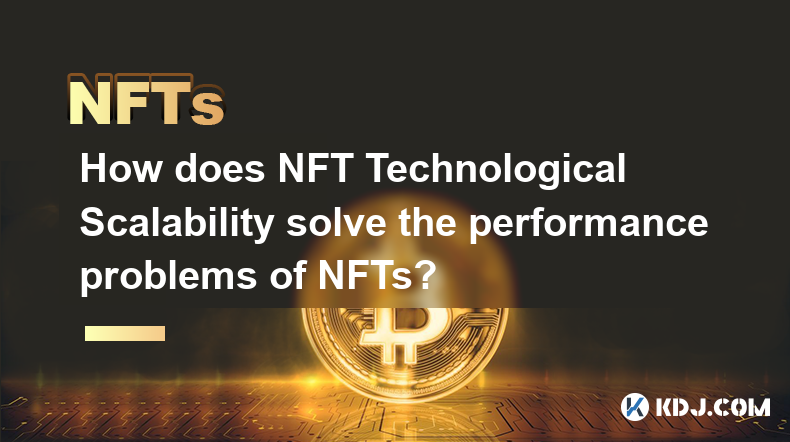
Key Points:
- NFT scalability issues stem from network congestion and high gas fees on blockchains like Ethereum.
- Layer-2 solutions, such as Polygon and Arbitrum, offer faster and cheaper transactions by processing transactions off the main chain.
- Sharding, a technique dividing the blockchain into smaller parts, improves transaction throughput.
- New blockchain platforms designed for scalability, like Solana and Cardano, offer alternatives to Ethereum.
- Data storage solutions, like IPFS, alleviate the burden on blockchains by storing NFT metadata off-chain.
How Does NFT Technological Scalability Solve the Performance Problems of NFTs?
Non-Fungible Tokens (NFTs) have exploded in popularity, but their underlying technology faces significant scalability challenges. The high transaction fees and slow processing speeds on many blockchains, particularly Ethereum, hinder widespread adoption and create a less-than-ideal user experience. Several technological advancements are actively addressing these performance bottlenecks.
One major hurdle is network congestion. When many users simultaneously try to mint or trade NFTs, the network can become overwhelmed, leading to increased transaction fees (gas fees) and slow confirmation times. This directly impacts the usability and accessibility of NFTs for both creators and collectors. The cost of minting or trading can become prohibitive, especially for smaller creators or those working with less expensive NFTs.
Layer-2 scaling solutions offer a compelling approach to mitigate these issues. Instead of processing every transaction directly on the main blockchain (like Ethereum's mainnet), Layer-2 solutions handle transactions off-chain. This significantly reduces congestion on the main chain, resulting in faster transaction speeds and lower gas fees. Popular examples include Polygon and Arbitrum, which offer various scaling mechanisms to enhance the efficiency of NFT transactions.
Sharding is another promising technique aimed at improving blockchain scalability. This method involves dividing the blockchain into smaller, more manageable fragments called "shards." Each shard handles a subset of transactions, distributing the workload and increasing the overall throughput of the network. This parallel processing capability allows for a much higher volume of transactions to be processed concurrently, thereby reducing latency and improving the overall user experience.
The creation of entirely new blockchains optimized for scalability is another significant development. Platforms like Solana and Cardano are designed from the ground up to handle a much larger number of transactions per second compared to Ethereum. They often employ different consensus mechanisms and architectural designs to achieve superior performance. While each has its own strengths and weaknesses, they represent viable alternatives for NFT creators and users seeking a more efficient platform.
Beyond blockchain improvements, efficient data storage solutions play a crucial role in NFT scalability. NFTs themselves typically store only a small amount of data on the blockchain – a hash pointing to the actual NFT metadata (image, video, etc.). This metadata is often stored off-chain, typically using decentralized storage networks like IPFS (InterPlanetary File System). By offloading this data, the blockchain remains leaner and more efficient, directly contributing to improved scalability.
How do Layer-2 solutions improve NFT transactions?
Layer-2 solutions process transactions off the main blockchain, reducing congestion and lowering gas fees. This makes NFT transactions faster and more affordable.
What are some examples of Layer-2 solutions for NFTs?
Polygon and Arbitrum are prominent examples of Layer-2 scaling solutions widely used for NFTs. Others include Optimism and Loopring.
How does sharding improve NFT scalability?
Sharding divides the blockchain into smaller parts, allowing for parallel processing of transactions and increasing the overall throughput of the network.
What are some alternative blockchains designed for NFT scalability?
Solana and Cardano are examples of blockchains designed to handle a higher transaction volume than Ethereum, offering faster and cheaper NFT transactions.
What is the role of IPFS in NFT scalability?
IPFS (InterPlanetary File System) is a decentralized storage network that stores NFT metadata off-chain, reducing the burden on the blockchain and improving scalability. This helps to keep the blockchain more efficient and faster.
What are the trade-offs associated with different scaling solutions?
Each scaling solution involves trade-offs. Layer-2 solutions might have complexities in bridging assets between layers, while new blockchains might lack the established ecosystem of Ethereum. Sharding introduces its own complexity in managing shard communication and data consistency. The choice depends on prioritizing factors such as speed, security, cost, and ecosystem maturity.
How do gas fees impact NFT transactions?
High gas fees, especially on Ethereum, can make NFT minting and trading prohibitively expensive, limiting participation, particularly for smaller creators and buyers. Scaling solutions aim to reduce these fees.
What are the future prospects for NFT scalability?
Ongoing research and development are continuously improving NFT scalability. Further advancements in Layer-2 solutions, sharding, and new blockchain architectures are expected to further enhance the efficiency and accessibility of NFTs. The development of more robust and efficient decentralized storage solutions will also play a significant role.
Disclaimer:info@kdj.com
The information provided is not trading advice. kdj.com does not assume any responsibility for any investments made based on the information provided in this article. Cryptocurrencies are highly volatile and it is highly recommended that you invest with caution after thorough research!
If you believe that the content used on this website infringes your copyright, please contact us immediately (info@kdj.com) and we will delete it promptly.
- Pepe (PEPE) Weekly Performance Hints At Huge Surge
- 2025-04-07 04:15:13
- XRP Price Tanks 12.8% This Week — More Pain to Come?
- 2025-04-07 04:15:13
- XRP's Funding Rate Has Dropped to Negative 0.012%, a Level Last Seen When the Asset Traded Near $0.33
- 2025-04-07 04:10:13
- A major supply event is coming for the SUI token
- 2025-04-07 04:10:13
- Memecoin DEX PumpSwap Makes a Significant Impact, Attracting 700K Wallets and Facilitating 30M Swaps
- 2025-04-07 04:05:12
- Ronin Network (RON) Has Retraced Heavily This Year
- 2025-04-07 04:05:12
Related knowledge
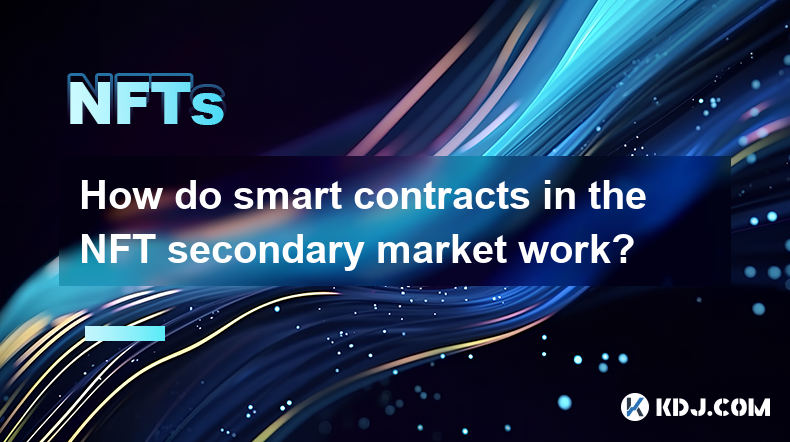
How do smart contracts in the NFT secondary market work?
Apr 03,2025 at 07:14am
Smart contracts play a pivotal role in the NFT secondary market, facilitating seamless transactions and enforcing predefined rules. These self-executing contracts with the terms of the agreement directly written into code are stored on the blockchain. In the context of NFTs, smart contracts automate the buying, selling, and transferring of digital asset...
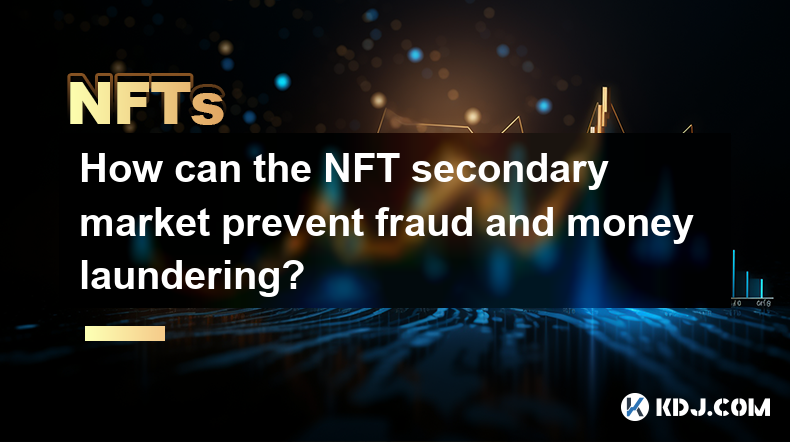
How can the NFT secondary market prevent fraud and money laundering?
Apr 03,2025 at 08:35am
The NFT secondary market has become a thriving hub for digital art and collectibles, but it also faces challenges in preventing fraud and money laundering. To tackle these issues, the market can implement various strategies and technologies to ensure a safer and more transparent trading environment. This article will explore how the NFT secondary market...

How are transaction fees in the NFT secondary market calculated?
Apr 04,2025 at 05:28am
The calculation of transaction fees in the NFT secondary market is a crucial aspect that both buyers and sellers need to understand. These fees can significantly impact the overall cost of transactions and the profits that sellers can make. In this article, we will delve into the various components that make up these fees, how they are calculated, and w...
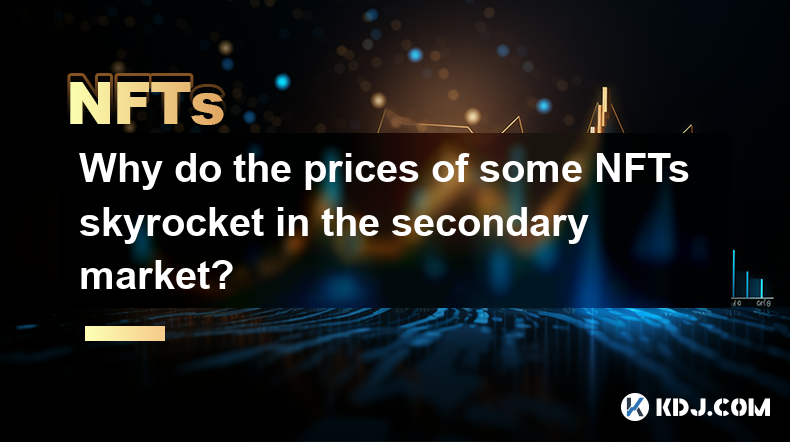
Why do the prices of some NFTs skyrocket in the secondary market?
Apr 06,2025 at 07:08am
The phenomenon of NFT prices skyrocketing in the secondary market is a fascinating aspect of the cryptocurrency and digital art world. Non-Fungible Tokens (NFTs) have taken the digital world by storm, and their value can surge dramatically after initial sales. Several factors contribute to this price surge, including rarity, demand, speculation, and the...
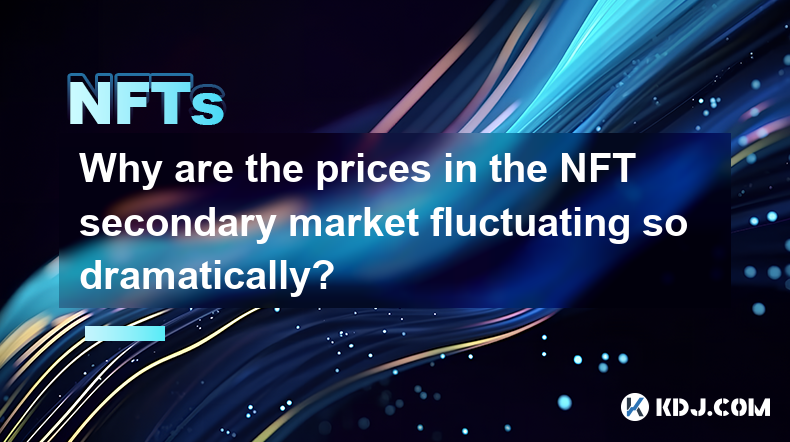
Why are the prices in the NFT secondary market fluctuating so dramatically?
Apr 03,2025 at 10:35pm
The NFT secondary market has been experiencing dramatic price fluctuations, leaving many in the cryptocurrency community puzzled and curious. To understand this phenomenon, it's essential to delve into the factors driving these price movements. From the impact of market sentiment and celebrity endorsements to the role of speculation and the unique natur...
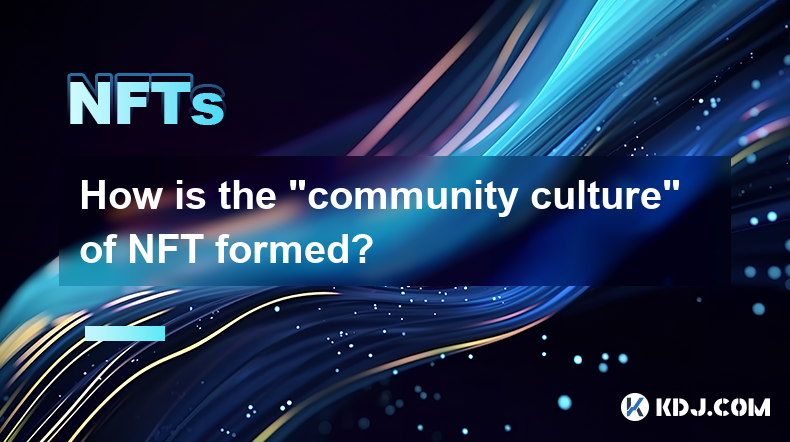
How is the “community culture” of NFT formed?
Apr 03,2025 at 11:07am
The formation of the 'community culture' within the NFT (Non-Fungible Token) space is a fascinating and multi-faceted process. It involves various elements such as shared interests, active engagement, and the creation of a sense of belonging among members. NFT communities often revolve around specific projects or artists, fostering a unique environment ...

How do smart contracts in the NFT secondary market work?
Apr 03,2025 at 07:14am
Smart contracts play a pivotal role in the NFT secondary market, facilitating seamless transactions and enforcing predefined rules. These self-executing contracts with the terms of the agreement directly written into code are stored on the blockchain. In the context of NFTs, smart contracts automate the buying, selling, and transferring of digital asset...

How can the NFT secondary market prevent fraud and money laundering?
Apr 03,2025 at 08:35am
The NFT secondary market has become a thriving hub for digital art and collectibles, but it also faces challenges in preventing fraud and money laundering. To tackle these issues, the market can implement various strategies and technologies to ensure a safer and more transparent trading environment. This article will explore how the NFT secondary market...

How are transaction fees in the NFT secondary market calculated?
Apr 04,2025 at 05:28am
The calculation of transaction fees in the NFT secondary market is a crucial aspect that both buyers and sellers need to understand. These fees can significantly impact the overall cost of transactions and the profits that sellers can make. In this article, we will delve into the various components that make up these fees, how they are calculated, and w...

Why do the prices of some NFTs skyrocket in the secondary market?
Apr 06,2025 at 07:08am
The phenomenon of NFT prices skyrocketing in the secondary market is a fascinating aspect of the cryptocurrency and digital art world. Non-Fungible Tokens (NFTs) have taken the digital world by storm, and their value can surge dramatically after initial sales. Several factors contribute to this price surge, including rarity, demand, speculation, and the...

Why are the prices in the NFT secondary market fluctuating so dramatically?
Apr 03,2025 at 10:35pm
The NFT secondary market has been experiencing dramatic price fluctuations, leaving many in the cryptocurrency community puzzled and curious. To understand this phenomenon, it's essential to delve into the factors driving these price movements. From the impact of market sentiment and celebrity endorsements to the role of speculation and the unique natur...

How is the “community culture” of NFT formed?
Apr 03,2025 at 11:07am
The formation of the 'community culture' within the NFT (Non-Fungible Token) space is a fascinating and multi-faceted process. It involves various elements such as shared interests, active engagement, and the creation of a sense of belonging among members. NFT communities often revolve around specific projects or artists, fostering a unique environment ...
See all articles





















































































